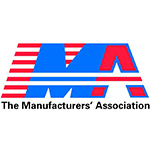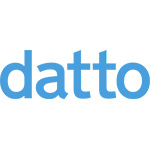 Seamless Flow, or hyper-automation, is radically changing industries and societies around the world. Automated, digitized processes and improved artificial intelligence decisions reduce costs and reduce working time, and in that way, we can spend more time on customer needs.
Seamless Flow, or hyper-automation, is radically changing industries and societies around the world. Automated, digitized processes and improved artificial intelligence decisions reduce costs and reduce working time, and in that way, we can spend more time on customer needs.
For Sandvik, Seamless Flow is a big step forward in the digital journey.
Uninterrupted flow is a concept that usually refers to a production process in which information flows automatically, producing the desired product or service without human intervention.
Normally applied to industrial processes, the concept is available in other areas too. Fiumicino Airport in Rome is one, where the Seamless Flow One-ID platform uses facial recognition technology to reduce the time it takes travelers to get around the airport. The opt-in self-service solution covers every step of the passenger's journey, from check-in to boarding. Those who choose to use it must undergo a facial recognition scan, which will be compared to the photo on their official travel document. The passenger's facial biometrics will be linked to their passport and travel information, allowing them to go through security checkpoints and board the plane without showing their boarding pass or any additional documents.
Hyper-automation does not necessarily make human employees redundant. Rather it gives them more time for activities that result in customer value, such as tips and guidance (as very few customers see manually entering routine command keys as an added value).
Uninterrupted flow is not a new phenomenon, but the closing of factories and disrupted supply chains following Covid-19 have accelerated its implementation. In addition, rapid developments in the IT landscape over the last decade have led to significant improvements in the efficiency of internal processes. In most organizations, enterprise resource planning (ERP) systems now support many of the tasks that previously had to be done manually.
ERP stands for enterprise resource planning and is the foundation of Seamless Flow. Because the different Sandvik products are very different in terms of how standardized they are and what the buying process looks like, there is no one-size-fits-all ERP system. But the goal is to streamline the previous wide range of business systems and for each division to implement the established one.
Data has become much more accurate, making it easier to hand over decision-making to machines and systems.
What does Seamless Flow mean at Sandvik? Imagine a customer placing an order electronically. The end-to-end process, from customer order to receipt of payment by Sandvik, is fully automated. Information flows seamlessly between different stages of the process and subsystems. The same goes for the production process, the purchasing process, the product management process, and the automated service tasks.
When it comes to the actual production of physical products, however, it needs to be automated. But so-called phantom factories, or closed-loop production units, are on the long-term roadmap, says Dan Ekholm, CIO at Sandvik Machining Solutions. "The production stage is more difficult to fully automate for customized and more complex products," he says.
Data is at the heart of Seamless Flow, and improved data quality and availability are key factors, Ekholm points out. "We used to spend a lot of time checking if the data we use as input for decision-making is correct," he says. "The data has become much more accurate, making it easier to teach decision-making to machines and systems that use advanced algorithms as support.
Reference: https://www.home.sandvik/en/stories/articles/2021/11/the-future-is-seamless/












